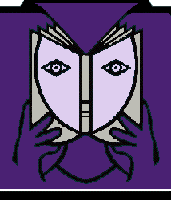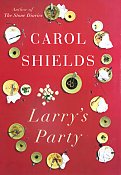
 |
National Library News |
by Catherine Hobbs,
Research and Information Services
The Literary Manuscripts Collection at the National Library focuses on archival material generated by Canadian authors, illustrators, translators and small presses. This collection provides researchers with an opportunity to trace the production of Canadian literature from handwritten notes to galley proofs. Among the holdings are the manuscripts of many well-known and highly regarded Canadian poets, novelists and playwrights.
In the early months of 1999, I had the privilege of organizing the second accession of the Carol Shields fonds for Literary Manuscripts. This most recent installment of her papers covers predominantly the period between 1994 and 1998, making it an exciting group of papers to organize since the 1990s have been such a full and varied time in Carol Shields's career as an author.
Carol Shields is one of Canada’s foremost writers. She is the author of popular novels, including The Box Garden, Small Ceremonies, The Stone Diaries and Larry’s Party, as well as being a poet, playwright and reviewer. Carol Shields was elected to the Order of Canada this year for her remarkable contribution to Canadian culture. She has won many literary awards; during this recent period she was awarded the National Book Critics Circle Award (1994) and the Pulitzer Prize (1995) for her novel The Stone Diaries, and the Orange Prize (1998) for her novel Larry’s Party. Readers are impressed by Shields’s skilled evocation of the small details of life; her poetic sense of both the everyday and the momentary. While organizing the second accession of her papers, I saw her smiling out from many photographs, witnessed how supportive she is of her friends, colleagues and students, and noticed that she always replies to her fan mail. I have seen evidence of the humble and giving nature noted by many of her interviewers; Shields is one who delights in storytelling as she delights in the minute details of life.
 |
Front row: (Left-Right) Past President of the Friends of the National Library Grete Hale, National Librarian Marianne Scott, author Carol Shields, Canada Council Head Shirley Thomson Back row: (Left-Right) Professor John English, Acting National Archivist Lee McDonald, author Lawrence Martin, Public Programs Head Randall Ware and Director General, Research and Information Services, Mary Jane Starr. |
A group of papers is organized into broad categories, reflecting the spheres of life in which the owner of the papers was involved. The scope of Carol Shields’s involvement is indeed impressive. During the period in which she has produced acclaimed novels and plays, she has also led a busy public life: as chancellor of the University of Winnipeg, as a teacher at the University of Manitoba and through the Humber School for Writers, and as a member of the Canada Council for the Arts. These areas of Shields’s life are reflected in her papers, which include her teaching notes, her correspondence with developing writers through the Humber School, and her professional correspondence and memoranda from both universities and from the Canada Council.
Literary manuscript collections comprise not only drafts and manuscripts of writers’ works, but also the correspondence, photographs and memorabilia which relate to the creation of these works. These additional materials provide context to the ideas developed in the works and set the creation of the works into a time frame. Carol Shields had kept a great variety of material to add to this collection at the National Library. Items, such as the Pulitzer Prize, which might garner attention because of their fame are found in the same collection as mementos of family life and the congratulatory notes from friends. If, in her fiction, readers find an acute sense of everyday detail, a subtle attention to the ephemeral and the personal is also evident in this collection. Examples of personal items included among the papers are paintings made by her grandchildren, memorabilia from her school reunion at Hanover College and lists for her book club. These personal keepsakes take their place alongside the more expected professional memorabilia such as posters for readings or book launches and Shields’s honorary degrees. Other personal items, such as a diary of a honeymoon trip to Great Britain written by her mother, Inez Warner, have clear relevance to Shields’s work; a honeymoon diary is written by the character Dorrie, Larry’s first wife, when these characters honeymoon in Great Britain in the novel Larry’s Party. These articles provide clues to how writers enhance the process of creation by revisiting the details of their own and others’ lives.
It appears that letter writing is a strong suit in Shields’s family and among her friends. Both the first and second accessions contain a staggering number of letters. Some of the professional letters reflect the personal affection Shields has for her publishers, Christopher Potter of Fourth Estate and Mindy Werner of Viking Penguin. Childhood letters to friends show her early enthusiasm for storytelling. Found among the letters from family members are details from her collaborations with two of her daughters: with Catherine on the play Fashion, Power, Guilt and the Charity of Families (which premiered at the Prairie Theatre Exchange in March of 1995); and with Anne on a written dialogue "Are There Martians in Jane Austen?" (which considers the portrayal of men and women in Jane Austen’s works and plays off the title of the popular self-help book by John Gray, Men Are from Mars, Women Are from Venus). Shields continues to write at length and frequently to her friend Blanche Howard, writer and collaborator with Shields on A Celibate Season. Shields’s letters provide a window on her collaborations, her connections within the writing community in Canada and her many professional relationships.
 |
W.H. Matthews. Mazes and Labyrinths: A General Account of Their History and Developments. London: Longmans, Green and Co., 1922. |
Carol Shields has received an impressive amount of worldwide exposure. She has travelled extensively, and her works have been translated into 22 languages, among them Dutch, Japanese and Spanish. Correspondence with the Norwegian translator Ingrid Haug, for example, reflects the keen attention Shields pays to the translations of her work and shows her appreciation for the effort invested by other contributors. She answers many detailed questions about the "foreign" details which come up in her work, such as: "What is an OXO block?" or "Who is Karen Kain?" It is interesting to see this process of translating Canadian literature for the rest of the world, especially since Carol Shields so often emphasizes the Canadianness of the settings of her novels: Winnipeg or Toronto for example. This regional Canadian consciousness is also reflected in the correspondence where she signed off "Greetings from snowy Winnipeg" or "With all good wishes from Manitoba".
The main novel manuscripts found in this part of the collection are from Larry’s Party, the novel for which Shields won the Orange Prize in England and was nominated for the Stephen Leacock Award for Humour here in Canada. This novel explores the life of the main character, Larry Weller, as he moves from a job as a florist to a career as a landscape gardener; from nurturing a passion for hedge mazes to building maze gardens for prosperous clients. The novel begins with Larry as a formless young man in the 1970s, who reaches into his pockets expecting the usual pocket lint, only to find he has snatched someone else’s jacket. The novel culminates with his 40th birthday party; the important people in Larry’s life attend the party and he sees his feelings and experiences in a new perspective. Shields’s manuscript drafts for Larry’s Party are word processed and marked with handwritten dates. The earliest draft of the novel, dated July 10, 1995, is marked "Day 1 of new novel". With this hint of excitement, the process begins. The novel grows from Shields’s first ideas about the party itself and the line "Unless your life is going well you don’t think of giving a party" (though in later drafts, the word "think" is replaced by the word "dream"). It is intriguing to see the full concept of the novel working itself out through the subsequent drafts. The lines that Carol Shields wrote first for the novel eventually take their place at the culmination of the story in the later drafts. One of the benefits of having multiple drafts in the collection is that the researcher can see that the idea of the party lay in the mind of the novel’s creator from the very beginning.
 |
It may also interest readers of Shields’s work to know that the personal touches which make the final novel so appealing were developed, in fact, by Shields herself. In the third completed draft of Larry’s Party, one can see that Shields attached the pictures of mazes to the chapter heading pages which divide up the novel. In the initial stages, these pictures were set above captions. Shields also created the dinner menu, the seating plan and the map which directs the characters to the party. In particular, the map was written on paper from a Toronto hotel, indicating that some ideas for the final scene might have come from a visit to Toronto. The menu, seating plan and map appear in the final novel, though they were rewritten in a different handwriting for the final printing. The idea of the maze, which acts in the novel as an extended metaphor of the process of living, is an idea which can also be traced through the papers. Researchers can follow the progression of the idea of the maze from some early research materials gathered by daughter Sarah Shields, through the chapter heading pages, to the tentative covers (produced by Shields’s publishers) that focus on the image of the maze. The idea of the maze lives on beyond the final production of the book in the minds of Shields’s readers, many of whom sent her clippings, pictures or anecdotes about mazes.
We are indeed lucky to have received such a comprehensive and detailed fonds — a fonds that reflects so many areas of her life — from Carol Shields. Shields is a stellar example of a writer who is not just a writer, but a public figure, teacher, commentator, mentor, cultural ambassador, emissary, family member and personal friend. It has been my privilege to provide access to this very rich research material.
For further information regarding the Literary Manuscript Collection, please contact
Linda Hoad
Literary Manuscript Collection
Research and Information Services
Ottawa, Ontario K1A 0N4
Telephone: (613) 996-2300
Fax: (613) 995-1969
E-mail: litmss@nlc-bnc.ca